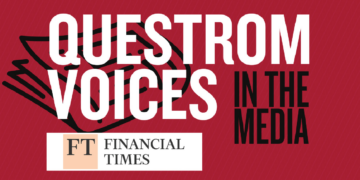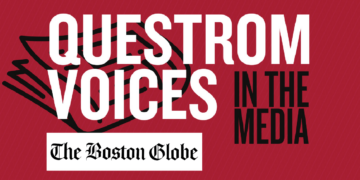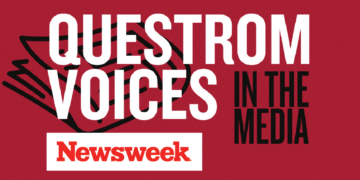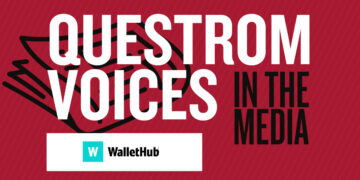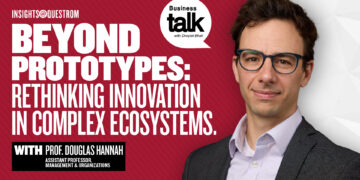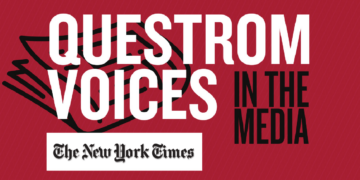Greg Stoller, Master Lecturer of Strategy and Innovation at Boston University’s Questrom School of Business, dives into the current back-to-school spending habits in his latest Insights@Questrom Q&A post. Drawing on economic and behavioral insights, he explains why families remain cautious with their purchases despite easing inflation and highlights the lasting impact of pandemic-related uncertainties on consumer behavior.
At a high level, what economic factors might be driving families to remain cautious with back-to-school spending, even as inflation eases?
The majority of the people that I regularly speak with are not looking through a microscopic, economic lens in terms of back-to-school spending. My point is that whether the price increases are due to inflation, tariffs, or weakening US dollar, people don’t care. What they do care about is saving money and trying to be pragmatic. In preparation for this article, some new ideas that have been bantered about are reusing backpacks from the year before, cleaning out old notebooks and either archiving those papers or throwing them out entirely (so they can be re-used) or instead of buying a 12 pack of pencils making do with a six pack.
How are current job market challenges, especially for recent graduates, affecting household financial decisions and consumer behavior today?
I have a somewhat unique barometer that I use to assess the economy every summer: The number of students I hear from between May and July in terms of their job searches. In past years, most of these discussions have centered on compensation negotiations, promotions (e.g., if they’ve been at the company for two or three years already) or mentorship as it relates to skill improvement. This summer, however, I am receiving over five emails a week from students who have not been able to get an interview let alone a job offer. This equally applies to US and non-US students alike. People are resigned to the fact that this might take a while. Not surprisingly, as children in their households, the parents are responding and kind by staying in jobs that they have or cutting down spending proportionally.
Are there any psychological or behavioral finance principles that help explain why consumers may still be hesitant to spend?
As noted above, the average consumer isn’t necessarily fluent in the idiosyncrasies of price earnings ratios, what defines a recession, the short vs. long end of the yield curve, or when it’s time to return to quantitative easing. What does resonate with them is losing their jobs and going to one income per household, or facing the increasing cost of “life,” whether that be inflation induced increases to everyday purchases or the cost of food at the grocery store.
What role does media coverage of economic uncertainty, like headlines about interest rates or consumer debt play in shaping spending behavior for average households?
When people read hardcopy newspapers, it was a well-known fact that the headline writers actually made more money than many of the journalists themselves. Their job was to have a provocative headline that would get people to purchase the physical newspaper. The same mentality applies to online media these days. People are trying to get clicks so are trying to be as sensational as possible. This only increases the angst of the average person, and especially when the DJIA is whipsawing on a weekly basis. That’s not say that there shouldn’t be concern, but the media is stoking the embers as much as they can. (It’s also worth noting that several journalists get compensated based on their click rates, so they want people to have a reason to visit their sites and read their articles).
What trends are you observing in how families are prioritizing their back-to-school purchases, are they buying differently or shifting to value brands?
There are two trends that I’m seeing: People are either accelerating purchases now to lock in prices before the tariffs might hit traditionally fall purchases (e.g., upgrading a phone, buying back to school clothing) or they are trying to make more with less.
How are generational differences playing into this? Are Gen Z parents spending differently than Gen X or millennials?
This has been a very interesting reading point for me. On one end of the spectrum are articles that say GenZ’s are not going to do as well as their parents (see article here), while others say that they’re actually going to be wealthier, albeit with more debt (see article here). Regardless, I think that parents are either having to support their children (with or without them living at home) or delaying bigger picture purchases to make sure they’re taking care of the family.
Do you think retailers are adapting their strategies effectively to meet today’s more cautious consumer mindset?
Retailers are connecting with consumers in ways that I’ve never seen. They are being extremely creative offering sales through social media channels, (ethically) exploiting AI to remind people about purchases, or leaning in hard to customer service inside the store. We have an Alexa in our kitchen and over the past couple of months it now regularly reminds us that certain items need to be re-purchased whether they are recurring foods that we might buy (e.g., mayonnaise, bananas, batteries, or even printer paper). It works because we use those products regularly.
Could these trends signal a longer-term shift in consumer habits, or is this just a temporary post-inflation adjustment period?
I absolutely believe that these consumer habits are here to stay. Think about how many people would prefer to order from Amazon even if it’s a little bit more expensive since they no longer have to drive far to a store? And if they want to return an item, they simply need to drop it off at UPS as opposed to returning to the same brick & mortar retailer.

